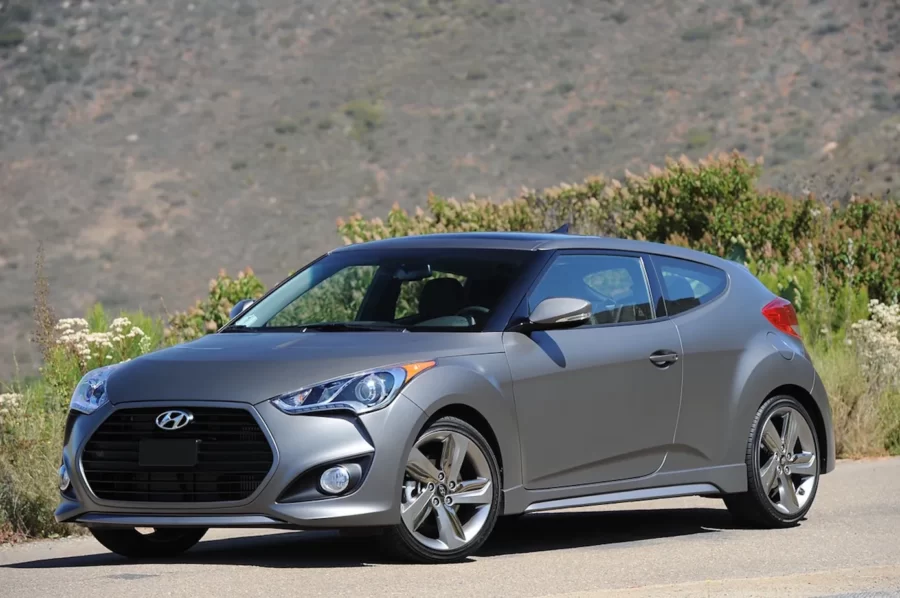Unleashing the Power of Innovation
Welcome to the world of the Hyundai Veloster, a car that effortlessly combines style, performance, and cutting-edge technology. With its unique three-door design and sporty appeal, the Veloster has captured the hearts of car enthusiasts worldwide. But there’s more to this remarkable vehicle than meets the eye.
History in Motion:
- Introduced in 2011, the Hyundai Veloster quickly made waves in the automotive industry.
- Designed to challenge conventions, it became a symbol of Hyundai’s commitment to pushing boundaries and redefining what a compact car could be.
- Over the years, the Veloster has undergone several upgrades and enhancements, solidifying its reputation as a true game-changer.
Why Wheel Nut Torque Matters:
- When it comes to the performance and safety of any vehicle, even the smallest details matter.
- One such crucial detail is the wheel nut torque, which refers to the amount of force applied to secure the lug nuts on the wheels.
- Proper wheel nut torque ensures that the wheels are securely fastened to the vehicle, preventing any potential accidents or mishaps on the road.
- Insufficient torque can lead to loose lug nuts, causing vibrations, wheel wobbling, and even detachment, endangering the driver, passengers, and other road users.
- On the other hand, excessive torque can lead to stripped threads or even damage to the wheel studs.
Now that we have delved into the captivating history of the Hyundai Veloster and understood the significance of wheel nut torque, let’s explore further into the specifications and practical recommendations to ensure a smooth and safe driving experience.
Lug Nut Sizes: Ensuring the Perfect Fit for Your Hyundai Veloster
When it comes to maintaining your Hyundai Veloster, paying attention to even the smallest details is essential. One such detail that often goes unnoticed but plays a crucial role in the overall performance and safety of your vehicle is the lug nut size. Let’s dive into the specific lug nut sizes for different trims, engines, and generations of the Hyundai Veloster.
Lug Nut Size for Different Trims and Engines:
Each trim and engine combination of the Hyundai Veloster may require a specific lug nut size to ensure a secure fit. Here is a breakdown of the lug nut sizes for different trims and engines:
| Trim | Engine | Lug Nut Size |
|---|---|---|
| Base | 2.0L Inline-4 | 12mm x 1.5 |
| Turbo R-Spec | 1.6L Turbocharged Inline-4 | 12mm x 1.5 |
| Veloster N | 2.0L Turbocharged Inline-4 | 14mm x 1.5 |
It’s important to note that these lug nut sizes are specific to the mentioned trims and engines. Using the correct lug nut size ensures a proper fit and prevents any potential issues that may arise from using incompatible lug nuts.
Lug Nut Torque Specifications for Different Generations:
Alongside the lug nut size, another critical factor to consider is the lug nut torque. Properly torquing the lug nuts ensures that they are tightened to the manufacturer’s recommended specifications, providing optimal safety and performance. Here are the lug nut torque specifications for different generations of the Hyundai Veloster:
| Generation | Lug Nut Torque (ft/lbs) | Lug Nut Torque (Nm) |
|---|---|---|
| First Generation (2011-2017) | 80-94 | 108-128 |
| Second Generation (2019-present) | 80-94 | 108-128 |
It’s crucial to follow the recommended lug nut torque specifications for your specific generation of the Hyundai Veloster. Under-torquing or over-torquing the lug nuts can lead to potential safety hazards or damage to the wheel studs.
By understanding the appropriate lug nut sizes and torque specifications for your Hyundai Veloster, you can ensure a secure fit, optimal performance, and most importantly, a safe driving experience. Remember to consult your vehicle’s manual or reach out to a professional if you have any doubts or questions regarding lug nut sizes and torque specifications.
Practical Recommendations: Ensuring Proper Wheel Nut Torque for Your Hyundai Veloster
1. Regularly Inspect and Retorque Lug Nuts:
Make it a habit to visually inspect your Hyundai Veloster’s lug nuts regularly. Look for any signs of looseness, corrosion, or damage. Additionally, consider retorquing the lug nuts after the first 50-100 miles of driving a newly installed wheel or after any maintenance involving wheel removal.
2. Use a Torque Wrench:
Invest in a reliable torque wrench to ensure accurate and consistent torque application. Avoid using impact wrenches or other power tools, as they can easily over-torque the lug nuts, leading to potential damage.
3. Follow Manufacturer’s Specifications:
Always refer to the manufacturer’s specifications for the recommended lug nut torque values. These specifications can be found in your vehicle’s owner’s manual or service guide. Adhering to these guidelines will help maintain the integrity of your wheels and ensure a safe driving experience.
4. Torque in a Star Pattern:
When tightening the lug nuts, follow a star or cross pattern rather than tightening them sequentially. This method helps distribute the torque evenly across all lug nuts, minimizing the risk of uneven pressure or warping the wheel.
5. Avoid Over-Tightening:
While it’s crucial to achieve the recommended torque, avoid over-tightening the lug nuts. Over-torquing can lead to stripped threads, damaged studs, or even wheel failure. Use a torque wrench to achieve the specified torque and avoid relying on guesswork.
6. Seek Professional Assistance:
If you’re unsure about the proper lug nut torque or lack the necessary tools, it’s always best to seek professional assistance. A qualified mechanic or tire technician can ensure that your Hyundai Veloster’s lug nuts are torqued correctly, providing peace of mind and optimal safety.
By following these practical recommendations, you can maintain the integrity of your Hyundai Veloster’s lug nuts, ensuring a secure fit, optimal performance, and most importantly, a safe driving experience for you and your passengers.

